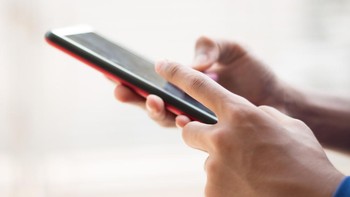As the holy month of Ramadan unfolds, the digital landscape witnesses a surge in traffic, posing two prominent challenges: poor signal quality and sluggish internet speeds. A recent study by Populix sheds light on these connectivity conundrums, unveiling the intricate dynamics of media consumption and delivery during Ramadan 2024.

In an era dominated by digital prowess, individuals seek the security and convenience offered by technology and the internet to foster connections and indulge in digital content—all within the palm of their hands. Indah Tanip, Head of Research at Populix, affirms this trend, emphasizing the increasing reliance on technology to sustain bonds and access diverse digital content during Ramadan.
Entitled "Ramadan 2024: Connectivity, Media Consumption, and Delivery Dynamics," the study reveals a significant uptick in internet data usage for calls, messaging, and digital content consumption during the holy month. Moreover, the digital infrastructure witnesses a notable spike in facilitating deliveries, particularly for consumers seeking convenience in procuring pre-dawn and fast-breaking meals.
Voice and video calls emerge as preferred modes of communication, overshadowing teleconferencing for connecting with loved ones. However, amidst this digital fervor, individuals grapple with two primary challenges: the prevalence of poor signal quality and sluggish internet speeds, impeding seamless connectivity experiences during Ramadan.
A staggering three out of four respondents express regular engagement with media content during Ramadan, particularly on social media and video streaming platforms like YouTube. Television and video-on-demand services take a back seat, eclipsed by the accessibility and relevance offered by social media and YouTube's diverse content ecosystem.
Populix highlights respondents' inclination towards social media and YouTube due to their accessibility and the array of relevant content available. Streaming services garner favor for their lucid information dissemination and efficacy in simplifying complex topics, while social media platforms offer tailored entertainment catering to diverse interests.
Four key content categories dominate Muslim users' digital consumption during Ramadan: schedules of religious observances, entertainment content, culinary recipes, and culinary programs for pre-dawn and fast-breaking meals. A significant majority (42%) engage with these contents before the fast-breaking time, showcasing a penchant for utilizing media while awaiting the Maghrib prayer.
Beyond content consumption, a substantial majority (81%) express a desire to share their Ramadan experiences, particularly during fast-breaking moments. Instagram and WhatsApp emerge as the preferred platforms for sharing these experiences, fostering communal bonds amidst the digital realm.
Consequently, nearly 60% of respondents express intent to subscribe to special Ramadan edition packages, perceiving them as more aligned with their communication needs and digital media access, all at more affordable prices.devil comet photos
The surge in consumption extends to delivery services as well, with three out of four Muslim individuals utilizing delivery services during Ramadan. Among them, 42% express a heightened reliance on delivery services, particularly for acquiring food and beverages, signifying a shift in consumption patterns during the holy month.
As Ramadan unfolds against the backdrop of digital connectivity challenges and media consumption surges, individuals navigate these complexities, leveraging technology to forge connections, access content, and share experiences, thus weaving a digital tapestry of communal engagement amidst the sacred observance.



